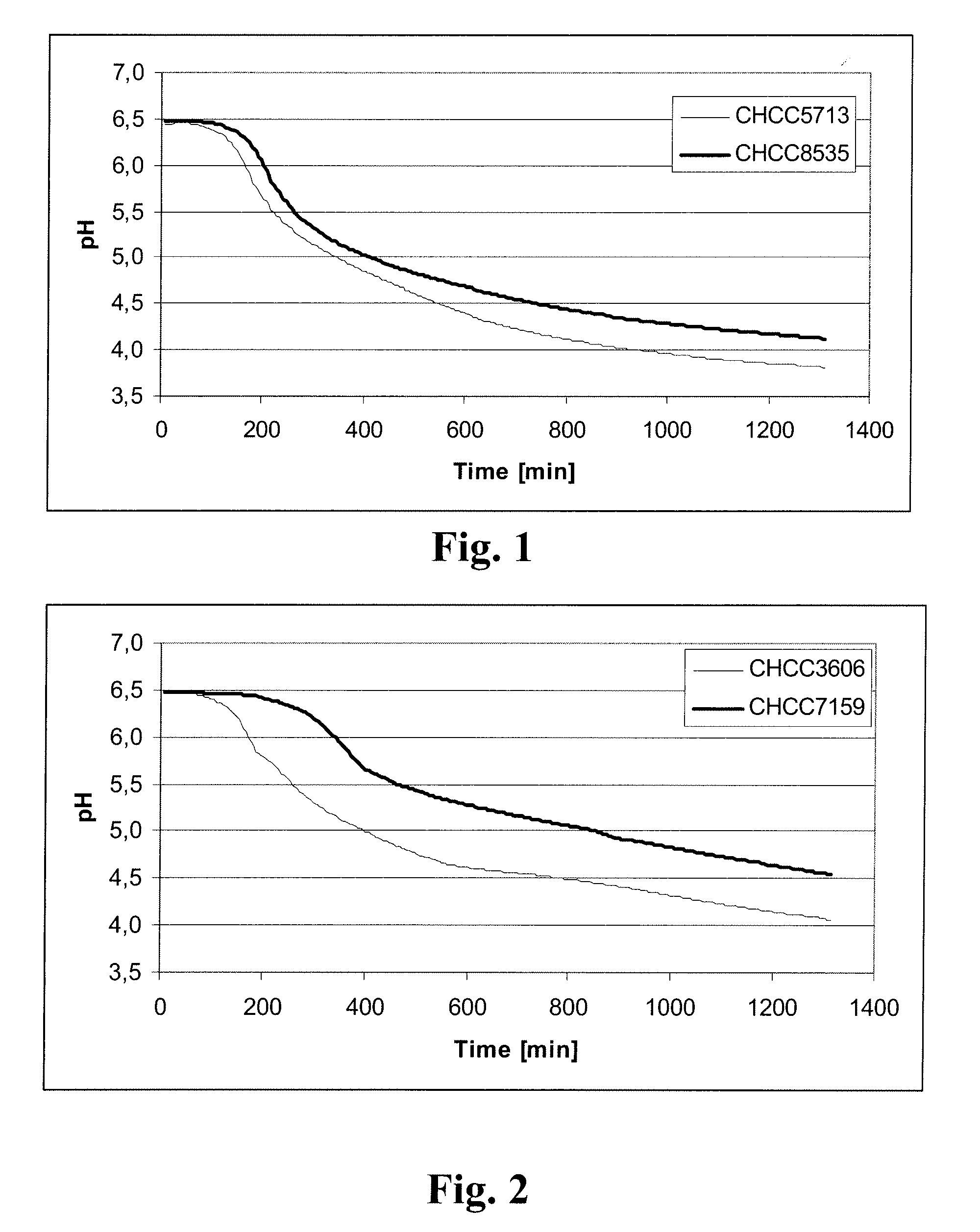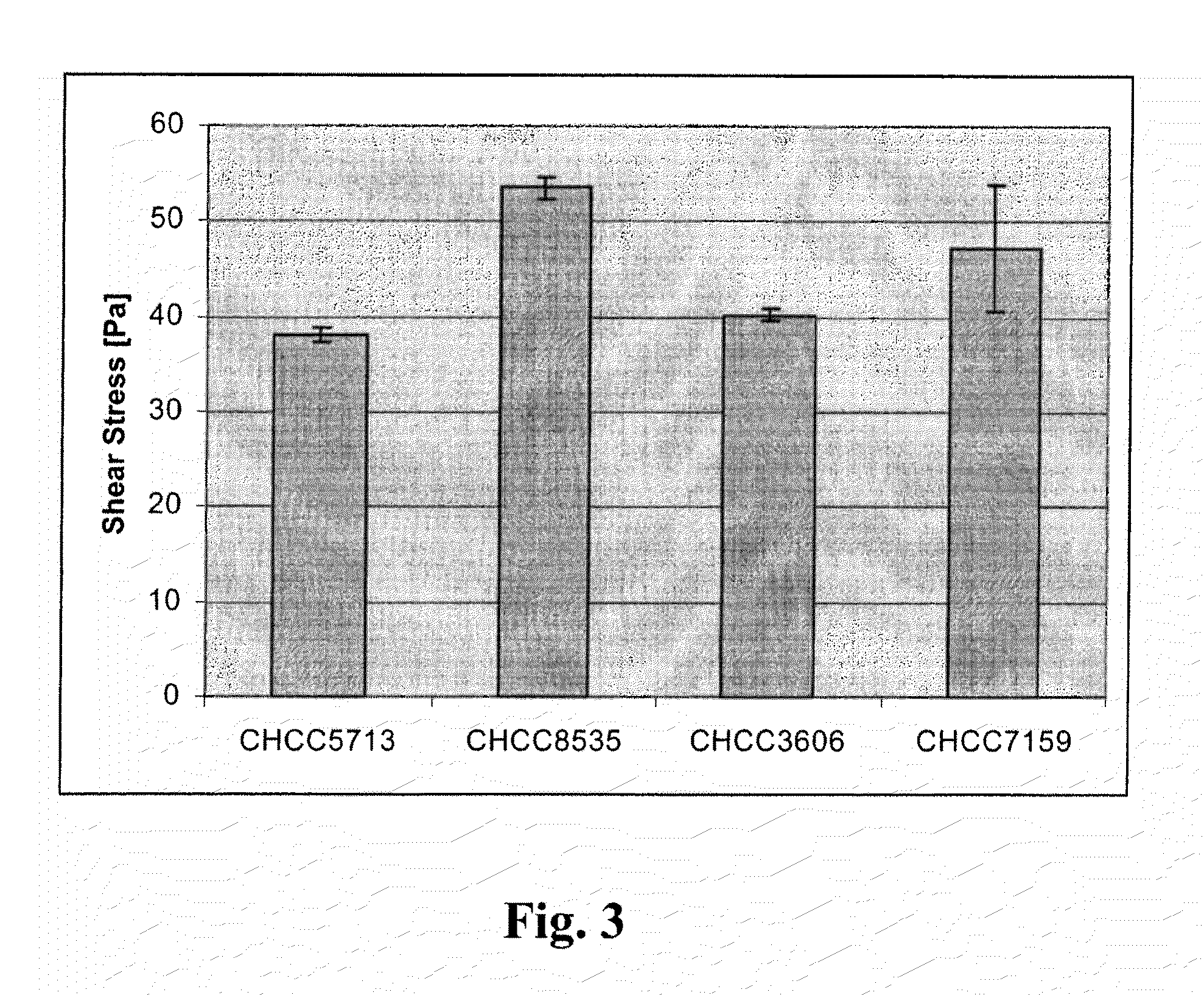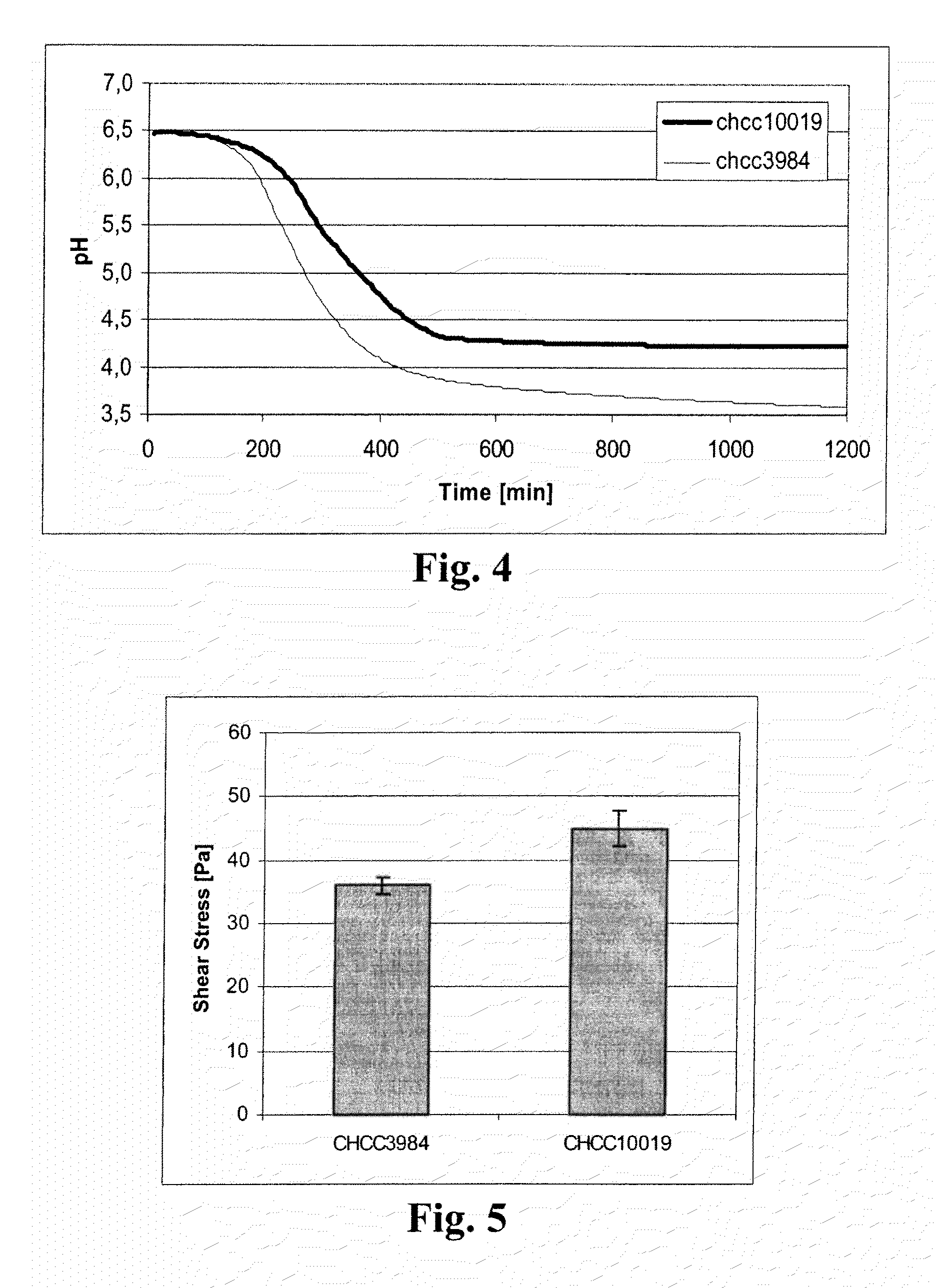Low post-acidifying lactic acid bacteria
a lactic acid bacteria, low-level technology, applied in the field of lactic acid bacteria, to achieve the effect of less post-acidification, low post-acidification profile, and high textur
- Summary
- Abstract
- Description
- Claims
- Application Information
AI Technical Summary
Benefits of technology
Problems solved by technology
Method used
Image
Examples
example 1
Preparation and Properties of LB strains CHCC7159 and CHCC8535
[0073]CHCC7159 and CHCC8535 are lactic acid bacteria of the type Lactobacillus bulgaricus. These strains are able to acidify milk under industrially relevant conditions and are characterised by a low post acidification. The strain CHCC7159 is a mutant obtained from CHCC3606, to which it was compared. CHCC8535 is a mutant of CHCC5713, to which it was compared. Mutagenesis (preferred protocol) and screening was carried out as described above.
[0074]Frozen concentrates of CHCC7159, CHCC8535, CHCC3606 and CHCC5713 were used to inoculate 200 mL milk reconstituted from skimmed milk powder. The milk had a dry matter content of 9.5% and had been heat treated to 99° C. for 15 minutes in a batch process. Frozen concentrates of Lactobacillus bulgaricus typically display a cell count between 1·109 and 3·1010 cfu / g. The rate of inoculation was 1 g concentrate per 10 L milk, hence between 1·105 and 3·106 cfu / mL milk. The incubation too...
example 2
Preparation and Properties of LB strain CHCC10019
[0084]CHCC10019 is a lactic acid bacterium of the type Lactobacillus bulgaricus. CHCC10019 is able to acidify milk under industrially relevant conditions and is characterised by a low post acidification. The strain CHCC10019 is a mutant obtained from CHCC3984, to which it was compared. Mutagenesis and screening was carried out as described above (“preferred pro-tocol”). The mutagen used was EMS.
[0085]Overnight cultures of CHCC10019 and CHCC3984 were prepared by inoculating 10 mL milk reconstituted from skimmed milk powder. The milk had a dry matter content of 9.5% and had been heat treated to 99° C. for 15 minutes in a batch process. Biological material was taken from frozen ampoules of the respective strains. Incubation took place at 37° C. for 24 hours.
[0086]Overnight cultures of CHCC10019 and CHCC3984 were used to inoculate of 200 mL milk reconstituted from skimmed milk powder (standard medium). The milk used was the same as descr...
PUM
| Property | Measurement | Unit |
|---|---|---|
| Time | aaaaa | aaaaa |
| Time | aaaaa | aaaaa |
| Temperature | aaaaa | aaaaa |
Abstract
Description
Claims
Application Information
 Login to View More
Login to View More - R&D
- Intellectual Property
- Life Sciences
- Materials
- Tech Scout
- Unparalleled Data Quality
- Higher Quality Content
- 60% Fewer Hallucinations
Browse by: Latest US Patents, China's latest patents, Technical Efficacy Thesaurus, Application Domain, Technology Topic, Popular Technical Reports.
© 2025 PatSnap. All rights reserved.Legal|Privacy policy|Modern Slavery Act Transparency Statement|Sitemap|About US| Contact US: help@patsnap.com



